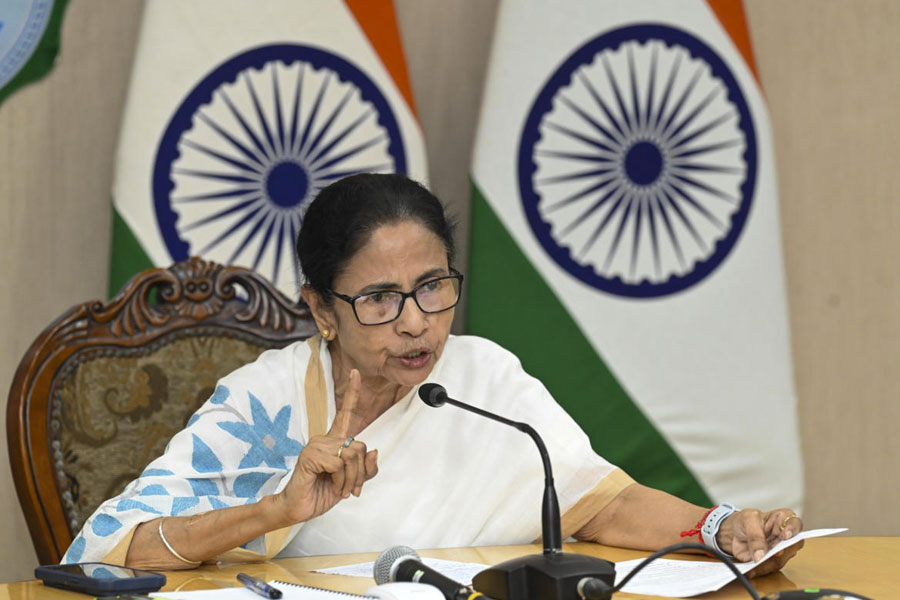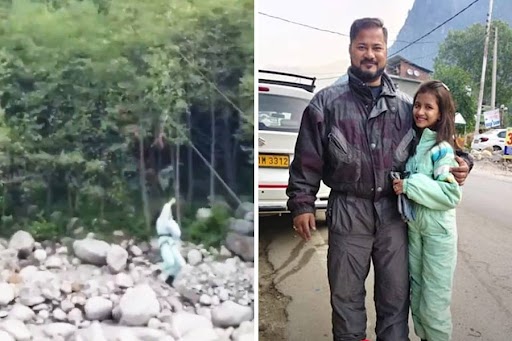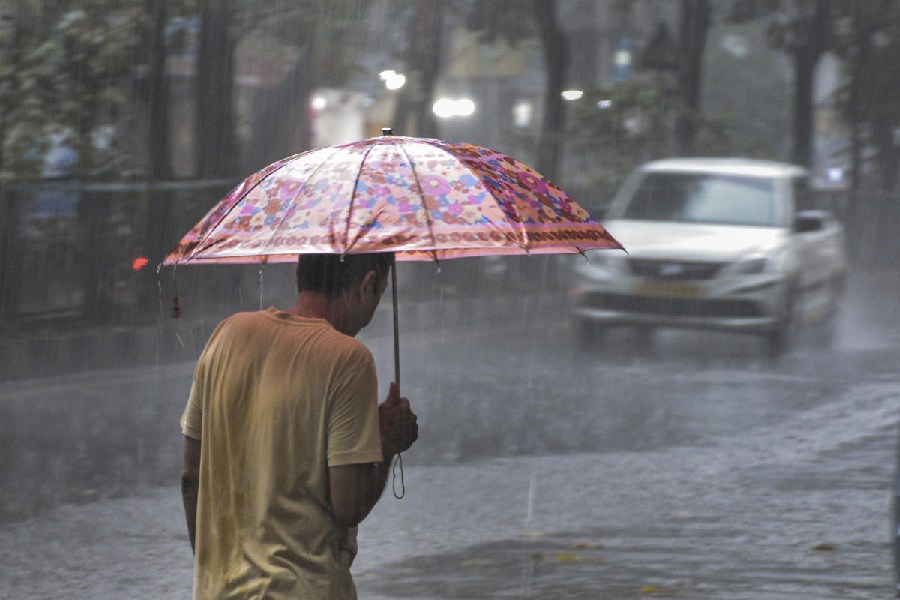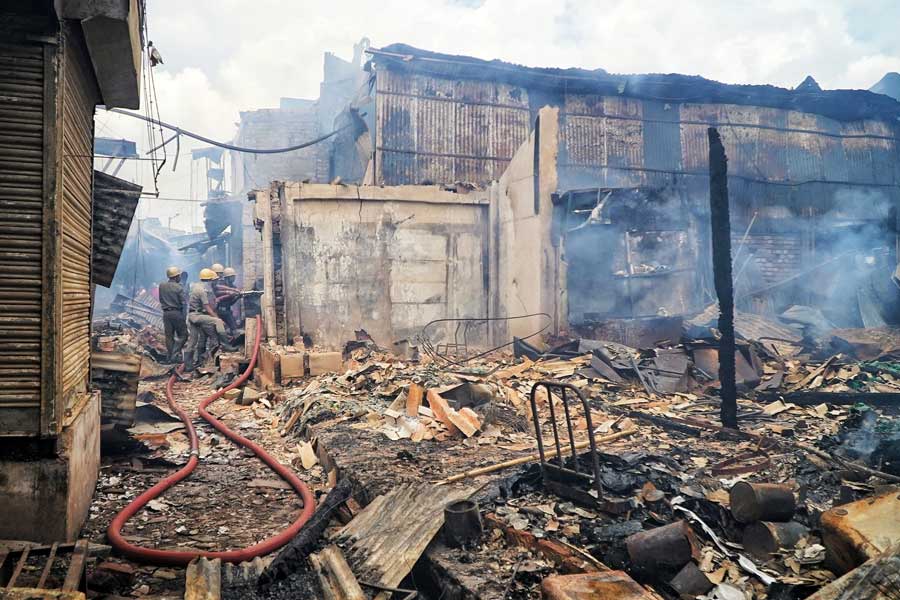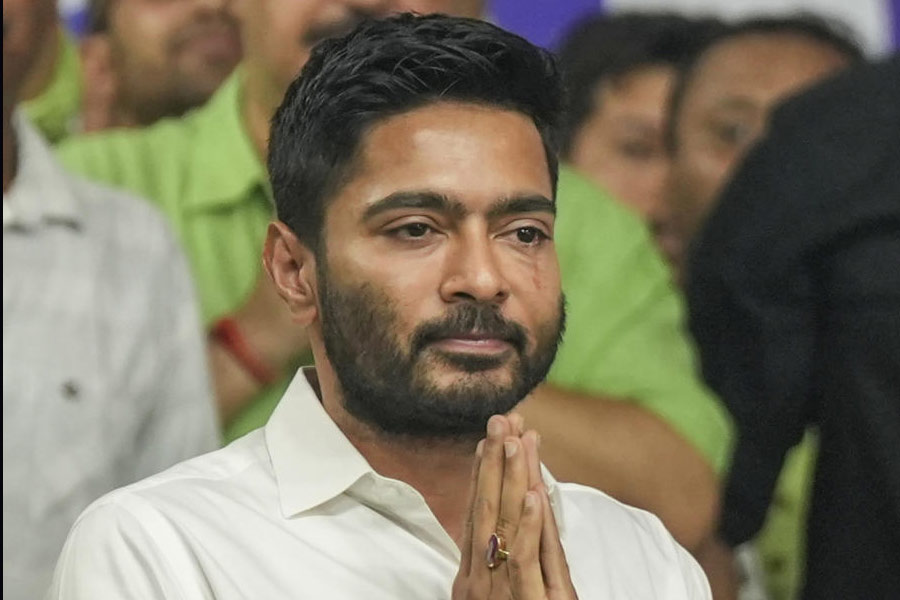Nov. 6: The Election Commission sent some Bengal officials to Bihar during the third phase of the polls to train them for better handling of the Assembly elections next year, a move that indicated that the "Bihar model" could be used in Bengal.
Five years ago, then Opposition leader Mamata Banerjee had welcomed the 2010 Bihar model of electioneering that was adopted by the commission for the Bengal Assembly polls in 2011. This time, it is the CPM that has spoken in favour of the likely use of the model for the Assembly elections next year.
The five-phase elections to the 243-seat Assembly in Bihar, where large pockets had been classified as sensitive, ended yesterday without a single major complaint of violence, malpractice or vitiation of the poll process.
Nabanna sources said the Election Commission had dropped "broad hints" that several key elements of the Bihar model could be put to use in Bengal next year.
With that objective in mind, the commission sent three Bengal officials to the neighbouring state ahead of the third phase of the polls on October 28. In that phase, 50 constituencies in Bhojpur, Buxar, Nalanda, Patna, Saran and Vaishali went to polls.
"Although some other states (Tamil Nadu, Kerala, Puducherry and Assam) are also going to polls next year, none of them is considered as critical in terms of electioneering as Bengal by the commission.... The Bihar model is decidedly effective and it could be replicated in Bengal," a poll panel source in Delhi said.
"Such a thing was done in 2011 as well and it had yielded satisfactory results," he added. Back then, Mamata had praised the commission for conducting the polls in a "free and fair manner".
This time, it is the CPM that has dubbed the model a "necessity" for Bengal.
"Given the success of our neighbour and what this state has witnessed in recent elections, the Bihar model has become a necessity for Bengal," CPM state secretariat member Rabin Deb said.
On October 15 and 16, Bengal chief electoral officer Sunil Kumar Gupta, additional chief electoral officer Saibal Barman and one of the joint chief electoral officers, Jaidip Mukhopadhyay, were sent to Bihar by the commission. The three officials were given a ringside view of the polls, guided by Bihar chief electoral officer Ajay Nayak, during their two-day stay.
Although none of the three Bengal officials wanted to share details of the visit, several senior Nabanna officials said the move was a "clear indication" that the commission wanted to adopt the Bihar model for Bengal next year to make the polls as glitch-free as possible.
A senior Bengal government official who has played key roles in conducting polls said high concentration of central forces in and around voting premises and a vigilant Election Commission could blunt "unique" methods of rigging. One of them, he said, was the use of false voters in place of absentee voters.
Allegedly started during the later years of Left rule and perfected in the Trinamul era under former all-India party general secretary Mukul Roy, the method involves party workers visiting homes months before polls to ascertain whether every voter will cast his or her ballot.
The official said that usually for every 10 voters, one is unlikely to show up because of death, illness, infirmity, relocation or general unwillingness. Assembly constituencies in Bengal have around 2 lakh voters each. One-tenth of that adds up to 20,000. On the day of polling, ruling party activists and supporters ensure that proxy votes are cast for these 20,000-odd people. Around 100-150 false votes are cast per booth, which comprises 1,200-odd voters.
"If the ruling party has a head start of around 20,000 in every seat, it becomes difficult for anybody else to emerge victorious.... This is a unique method that is difficult to prevent unless the commission is cautious," he added.
In the Lok Sabha polls last year, there were numerous complaints of intimidation and rigging by Trinamul. The Opposition had alleged that the "biased" administration had ensured that central forces remained ineffective.
Besides, complaints of electoral malpractices, such as intimidation of people days before polling to ensure genuine voters stayed away from the booths, allegedly did not reach the commission on time because of faulty reporting by poll officials.
This year, the polls to 92 civic bodies, including the Calcutta Municipal Corporation, in April and three more in October - conducted by the state election commission - were marred by hundreds of complaints of violence, intimidation and rigging by the ruling party.
Amid scathing criticism from all quarters for staying inert and ineffective, S.R. Upadhaya stepped down from the post of state election commissioner last month, allegedly after being insulted by a section of Trinamul leaders.
"The commission seems to have taken it as a challenge to hold free, fair and peaceful elections in Bengal after several complaints of malpractice, inertia and bias were lodged during the Lok Sabha polls last year.... The way the civic elections were conducted under the watch of the state poll panel this year is also something the Election Commission took note of," a government official said.
Some officials from Bengal who were deployed in the first two phases of the Bihar elections as observers said central forces were used "very effectively".
According to one of them, in the first phase on October 12, more than 1.5 lakh central force personnel (around 1,500 companies) were deployed for 1.5 crore voters. As many as 49 seats in Banka, Bhagalpur, Begusarai, Jamui, Khagaria, Lakhisarai, Munger, Nawada, Samastipur and Sheikhpura, where many areas had been identified as sensitive, went to polls.
The commission stuck to the formula of one central force member per 100 voters. The official said the commission was likely to use a similar deployment pattern in Bengal.
"Besides the numbers, the commission used central forces inside and outside booths and their vicinity, leaving relatively less important and back-up roles for the state forces," he said.
If central forces are deployed inside booths, the chances of manipulation by polling agents and their aides can be minimised.
"The commission kept a stern eye on the administration to make sure that the central forces were handled properly throughout the poll process," he added.
According to a Bengal government official with vast experience in handling elections, the role of the administration is "pivotal" in the effective utilisation of central forces.
"Identification of sensitive booths and areas is done at the ground level by the state administration and the final deployment plan is largely based on that. If the administration does not give proper information, it is not possible for those coming from elsewhere to identify the ground realities within days," he said.
A senior Nabanna official said the commission kept the Bihar administration on a "tight leash" so that there was no "mischief".
Allegedly on the basis of complaints of bias towards the ruling party, the commission replaced Amir Subhani with Sudhir Kumar Rakesh as the home secretary of Bihar at the beginning of the election process.
Rakesh was the chief electoral officer of Bihar during the 2010 Assembly polls and was a special state observer for the Lok Sabha elections in Bengal last year.
"If you start with the removal of 10 senior IAS officers and seven senior IPS officers, you ensure that every official in the administration remains under tremendous pressure to deliver through the election process," the Nabanna official said.
THE POLL DIFFERENCES
Key elements of the 2015 “Bihar model” and their differences with the 2014 Lok Sabha polls and the two sets of 2015 civic elections in Bengal
Vulnerability mapping of booths
- 2015 Bihar elections: Besides the civil and police administration, inputs from all political parties and candidates were factored in.
- 2014 Bengal elections: Political parties consulted, but the Opposition alleged that its concerns were not reflected in the final mapping.
- 2015 Bengal elections: Political parties were not consulted for the process.
Central force utilisation
- 2015 Bihar elections: Used inside and outside each and every booth and premise, besides area domination ahead of the polling days.
- 2014 Bengal elections: Rendered ineffective in most places because of shoddy deployment away from the action by the civil and police administration, allegedly under political pressure.
- 2015 Bengal elections: Central forces were unavailable in October. Only six companies available in April, kept away from the vulnerable zones by the administration.
Role of state forces
- 2015 Bihar elections: Used primarily as back-up for the central forces. The state forces were used for static duty, neighbourhood patrolling and security of polling officials.
- 2014 Bengal elections: In many places, state forces seen playing roles otherwise given to central forces, allegedly at the behest of the ruling establishment.
- 2015 Bengal elections: State forces ruled the roost in the virtual or complete absence of central forces.
Vigil on state officials participating in the election process
- 2015 Bihar elections: Prompt and stern action against complaints of bias or inaction.
- 2014 Bengal elections: Seven IPS officers, one IAS officer and dozens of junior officials in the civil and police administration barred from election duty by the poll panel, only to be reinstated by the government after the polls.
- 2015 Bengal elections: Despite numerous complaints of bias and inertia, no action was initiated against anybody.
Security technology
- 2015 Bihar elections: Drones and satellite imagery, besides satellite phones. Live webcast from 800-odd booths and over 1,000 video cameras in each phase.
- 2014 Bengal elections: Similar technology was in use, but complaints of disruption of webcasting and obstruction of cameras were reported from some places.
- 2015 Bengal elections: Minimal use of such technology. Cameras were turned away or smashed in numerous places.
Use of observers
- 2015 Bihar elections: One general observer per constituency, one police observer for each district, one expenditure observer for every three-four constituencies, besides 3,000 micro observers for each phase.
- 2014 Bengal elections: Observers were deployed on the basis of a similar formula, but many of them allegedly looked the other way whenever there was trouble.
- 2015 Bengal elections: Nabanna released less than half the required number of observers. Relatively junior officials were deputed.
Pre-emptive measures for law and order
- 2015 Bihar elections: Over 17,500 non-bailable warrants were executed. Around 3 lakh people were identified as possible troublemakers. They had to provide bonds. Seizure of 1,018 illegal firearms and 172 bombs and busting of 36 illegal gun-manufacturing units.
- 2014 Bengal elections: Similar measures were in place.
- 2015 Bengal elections: No such drives were conducted.
* The 2015 civic polls in April and October were conducted by the Bengal election commission


